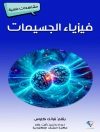This book highlights recent advances in quantum control technologies with regard to hybrid quantum systems. It addresses the following topics: phonon engineering based on phononic crystals, carbon-based nano materials like graphene and nanotubes, Terahertz light technology for single-molecule and quantum dots, nuclear-spin-based metrology for semiconductor quantum systems, quantum anomalous Hall effect in magnetic topological insulators, chiral three-dimensional photonic crystals, and bio-inspired magnonic systems. Each topic, as a component in the framework of hybrid quantum systems, is concisely presented by experts at the forefront of the field. Accordingly, the book offers a valuable asset, and will help readers find advanced technologies and materials suitable for their purposes.
Table des matières
Diversity of hybrid quantum systems.- Phonon Engineering for Quantum Hybrid Systems.-Phonon Engineering of Graphene by Structural Modification.- On-Chip Wave Manipulation Enabled by an Electromechanical Phononic Crystal Waveguide.- Electron and Phonon Transport Simulation for Quantum Hybrid Electronics.- Strain Science and Engineering in Graphene.- Carbon Nanotubes for Hybrid Quantum System: Material and Properties.-Suspended Carbon Nanotubes for Quantum Hybrid Electronics.- Quantum Effects in Carbon Nanotubes: Effects of Curvature, Finite-Length and Topological Properties.- Synthesis of Nanocarbon Materials from Solid Templates for Quantum Hybrid Electronics.-Quantum Anomalous Hall Effect in Magnetic Topological Insulator.-Terahertz Electronic and Vibronic Dynamics at the Single Molecule Level.- Novel Phonon Generator and Photon Detector by Single Electron Transport in Quantum Dots.- Hyperfine-Mediated Quantum Transport in a One Dimensional Channel.- Microscopic Observation of Quantum Hall Systems Involving Edge, Bulk Localized, and Hyperfine-Coupled States.-Semiconductor Chiral Photonic Crystal for Controlling Circularly Polarized Vacuum Field.- Hybrid Structure of Semiconductor Quantum Well Superlattice and Quantum Dot.- Magnonics Coupled with Spin Fluctuation Inspired by the Bio Systems.
A propos de l’auteur
Yoshiro Hirayama is a Professor at the Center for Science and Innovation in Spintronics (CSIS), Tohoku University, Japan. He received his Ph.D. in Engineering from the University of Tokyo in 1983. He joined NTT Basic Research Laboratories the same year, and served as the Group Leader, Distinguished Technical Member and Executive Manager. He was a professor at the Graduate School of Science, Tohoku University, from 2006 to 2021. In the course of his work, he has led numerous research projects on semiconductor quantum transport, carrier interaction, and quantum coherent systems, e.g. “Nuclear Spin Electronics” funded by ERATO-JST (2007-2015), and the Grant-in-Aid for Scientific Research on Innovative Area “Science of Hybrid Quantum Systems (2015-2020). He is also a Fellow of the Institute of Physics (London) and the Japan Society of Applied Physics.
Kazuhiko Hirakawa is a Professor at the Institute of Industrial Science, the University of Tokyo. His research interests include electron transport and terahertz photodynamics of semiconductor heterostructures and quantum nanostructures. He received his Ph.D. in Electronic Engineering from the University of Tokyo in 1987. He was a visiting researcher at Princeton University in 1991-1993 and a visiting professor at Le Laboratoire Pierre Aigrain, École Normale Supérieure in 2006. He subsequently led a JST CREST project on the physics and applications of extremely small quantum nanotransistors. Currently he is also Director of the University of Tokyo’s Institute for Quantum Nano Information Electronics and a Fellow of the Japan Society of Applied Physics.
Hiroshi Yamaguchi is an executive manager for quantum and nano device research at NTT Basic Research Laboratories. His work chiefly focuses on compound semiconductor surfaces, scanning tunneling microscopy, and micro/nanomechanical devices using semiconductor heterostructures. He received his Ph.D. in Engineering from Osaka University in 1993. Hejoined NTT Basic Research Laboratories, Nippon Telegraph and Telephone Corporation in 1986, and was promoted to Senior Distinguished Scientist in 2011. He served as Director of the Japanese Society of Applied Physics (JSAP) in 2008 and 2009, and is a Fellow of the Institute of Physics (London) and the Japan Society of Applied Physics.












